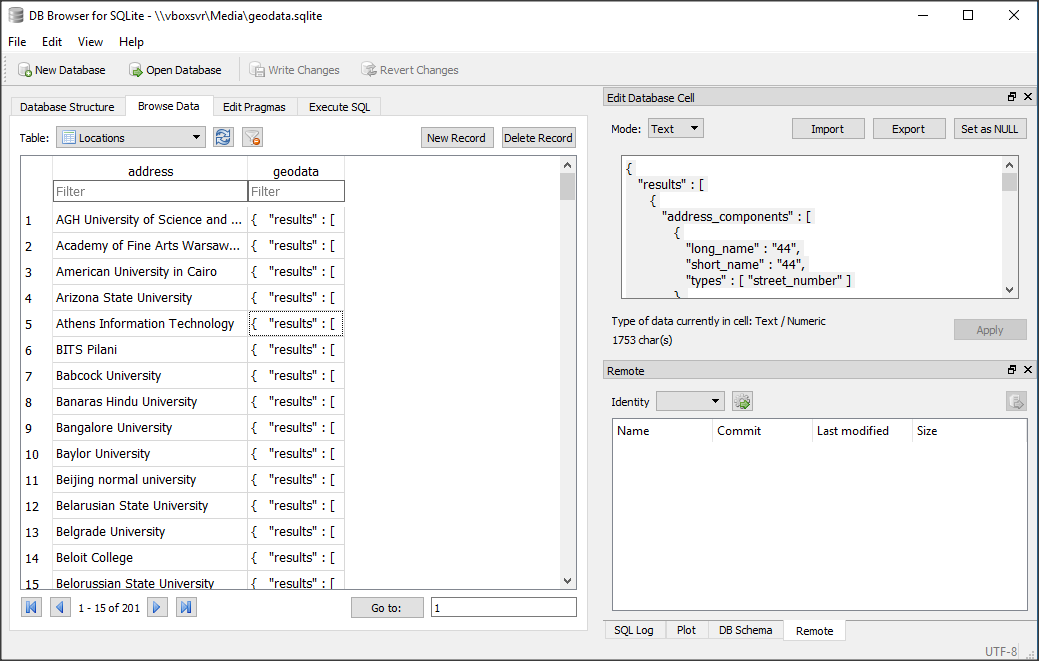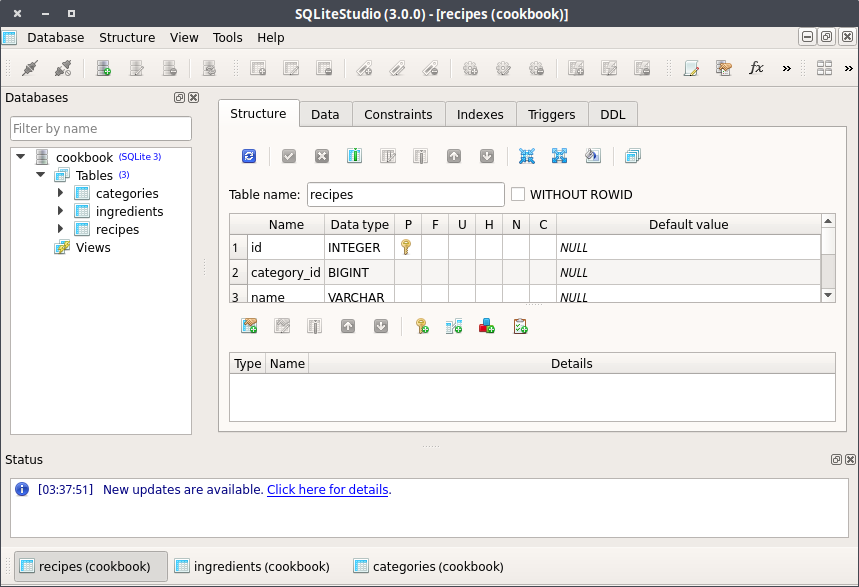

The STORED column does take up space in the database file while the VIRTUAL column doesn’t. Use VIRTUAL or STORED option for a generated column.Use GENERATED ALWAYS constraint to declare a generated column.Generated columns are columns whose values derived from other columns within the same table.The expression of a generated column can reference a INTEGER PRIMARY KEY column but it cannot directly reference a ROWID column.It only can reference constants literals, columns within the same rows, and scalar deterministic functions. The expression cannot use subqueries, aggregate functions, window functions, or table-valued functions.A generated column cannot reference itself, either directly or indirectly.Following is the syntax of dropping table column in SQLite. Instead, we need to rename the table then create a new table, and copy the data into the new table same as modifying table column type. However, it possible to use the ALTER TABLE ADD COLUMN statement to add a VIRTUAL column. SQLite Drop Column in Table In SQLite, we cannot directly use the ALTER TABLE statement to drop a column in a table. It’s NOT possible to use the ALTER TABLE ADD COLUMN statement to add a STORED column.
 If a table has a generated column, it must have a least one generated columns. A generated column cannot be used as a part of a PRIMARY KEY. A generated column cannot have a default value. SQLite places the following constraints on generated columns: A generated column can reference other columns including other generated columns within the same table as long as it does not reference itself. A generated column can be a part of one or more indexes. A generated column can have NOT NULL, CHECK, UNIQUE, and FOREIGN KEY constraints. SQLite will convert the value from the expression to that data type using the same affinity rules as for regular columns. A generated column can have a datatype. Generated columns have the following features: SQLite generated column exampleįirst, create a table called products by using the following CREATE TABLE statement:Īs you can see clearly from the output, the value of the net_price column is calculated based on the values of the price, discount, and tax columns. In practice, you use the STORED option when you want to optimize for reading and the VIRTUAL option when you want to optimize for writing. SQLite uses the VIRTUAL by default when you don’t explicitly specify VIRTUAL or STORED in the generated column declaration. SQLite updates the values of the STORED generated column when you write to the database. In other words, the STORED generated column takes up spaces in the database file. In case a generated column is STORED, SQLite stores the values of the column physically. Instead, when you read values from the generated column, SQLite computes these values based on the expression specified in the column declaration.
If a table has a generated column, it must have a least one generated columns. A generated column cannot be used as a part of a PRIMARY KEY. A generated column cannot have a default value. SQLite places the following constraints on generated columns: A generated column can reference other columns including other generated columns within the same table as long as it does not reference itself. A generated column can be a part of one or more indexes. A generated column can have NOT NULL, CHECK, UNIQUE, and FOREIGN KEY constraints. SQLite will convert the value from the expression to that data type using the same affinity rules as for regular columns. A generated column can have a datatype. Generated columns have the following features: SQLite generated column exampleįirst, create a table called products by using the following CREATE TABLE statement:Īs you can see clearly from the output, the value of the net_price column is calculated based on the values of the price, discount, and tax columns. In practice, you use the STORED option when you want to optimize for reading and the VIRTUAL option when you want to optimize for writing. SQLite uses the VIRTUAL by default when you don’t explicitly specify VIRTUAL or STORED in the generated column declaration. SQLite updates the values of the STORED generated column when you write to the database. In other words, the STORED generated column takes up spaces in the database file. In case a generated column is STORED, SQLite stores the values of the column physically. Instead, when you read values from the generated column, SQLite computes these values based on the expression specified in the column declaration. 
If a generated column is VIRTUAL, SQLite doesn’t store the values of the column physically.
DROP TABLE SQLITE BROWSER CODE
Column_name data_type AS expression Code language: SQL (Structured Query Language) ( sql )Ī generated column can be either VIRTUAL or STORED.







 0 kommentar(er)
0 kommentar(er)
